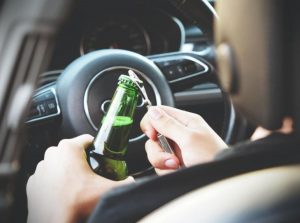 Every year, millions of people around the world are affected by the actions of irresponsible drivers. Australia, like many other countries, still has a problem with drink driving. According to the BITRE (Bureau of Infrastructure, Transport, and Regional Economics), nearly 400 Australians died in 2016 as a result of drink driving. Some sources suggest that three in ten accidents involve alcohol, and this is still far too high. You don’t need to earn JCU’s bachelor of law to know that driving while intoxicated is illegal, but there are some things you should understand in regards to the DUI laws in Australia.
Every year, millions of people around the world are affected by the actions of irresponsible drivers. Australia, like many other countries, still has a problem with drink driving. According to the BITRE (Bureau of Infrastructure, Transport, and Regional Economics), nearly 400 Australians died in 2016 as a result of drink driving. Some sources suggest that three in ten accidents involve alcohol, and this is still far too high. You don’t need to earn JCU’s bachelor of law to know that driving while intoxicated is illegal, but there are some things you should understand in regards to the DUI laws in Australia.
To stay on the right side of the law, here’s everything you need to know about the DUI laws in Australia.
The Importance of BAC (Blood Alcohol Concentration)
As we all know, there are many problems with driving under the influence of alcohol. Since alcohol impairs vision and decision-making, it puts all road users at risk. As far as the law goes, it all revolves around blood alcohol concentration (sometimes called PCA or prescribed concentration of alcohol). If your BAC is over 0.05%, you cannot drive a vehicle and will be breaching the law by getting behind the wheel.
Even with a BAC of 0.05%, research suggests that you’re TWICE as likely to get involved in an accident. If you’re caught driving with a BAC over this mark, you will be committing an offense.
However, it’s important to note that this doesn’t apply to all drivers. For some groups, you cannot have even a sip of alcohol and then drive. This includes:
- Drivers with less than two years of experience
- Extraordinary License holders
- Recently disqualified drivers
- Small charter vehicle, taxi, or bus drivers
- Vehicles over 22.5 tonnes
- Vehicles with dangerous goods
Therefore, these drivers will commit an offense when driving with a BAC of anything over zero.
Legal Limits
What does it mean to have a BAC of over 0.05%? For men, this means a maximum of two drinks in the first hour and then only one per hour afterward. For women, this normally means one drink per hour. Of course, this is based on average men and women, so you may need to adjust accordingly.
Also, this is a guide from the Alcohol and Drug Foundation; it’s possible to blow over 0.05% even while sticking to this guide. If you have any doubt, avoid alcohol for the evening and stay sharp for your journeys on the road.
Charges and Penalties
In Australia, there are six charges for drink driving, and the penalty for your crime depends on your age, experience, and BAC. The charges are as follows:
- Low Range Drink Driving
- Mid Range Drink Driving
- High Range Drink Driving
- Novice Range Drink Driving
- Special Range Drink Driving
- DUI
Ultimately, the brackets between low, mid, and high range drink driving vary from one state to the next. Therefore, we recommend researching the limits in your state. As a general rule, high range drink driving is for drivers with a BAC of above 0.15% while low and mid-range fall between 0.05% and 0.15%.
Can you lose your license for drink driving in Australia? Absolutely, and it happens to many drivers every single year. Each case is unique, but you may be disqualified from driving if you’re convicted for drink driving. While some lose their license for several months, others aren’t allowed to drive again for many years.
Even if you don’t commit another offense, a drink driving conviction can remain on your record for up to ten years. Once the conviction is spent, you no longer need to disclose it in relevant situations.
Conclusion
Don’t drink and drive; you put innocent people in danger, can lose your license, and will get a penalty appropriate for the offense, your history, and the BAC reading.


